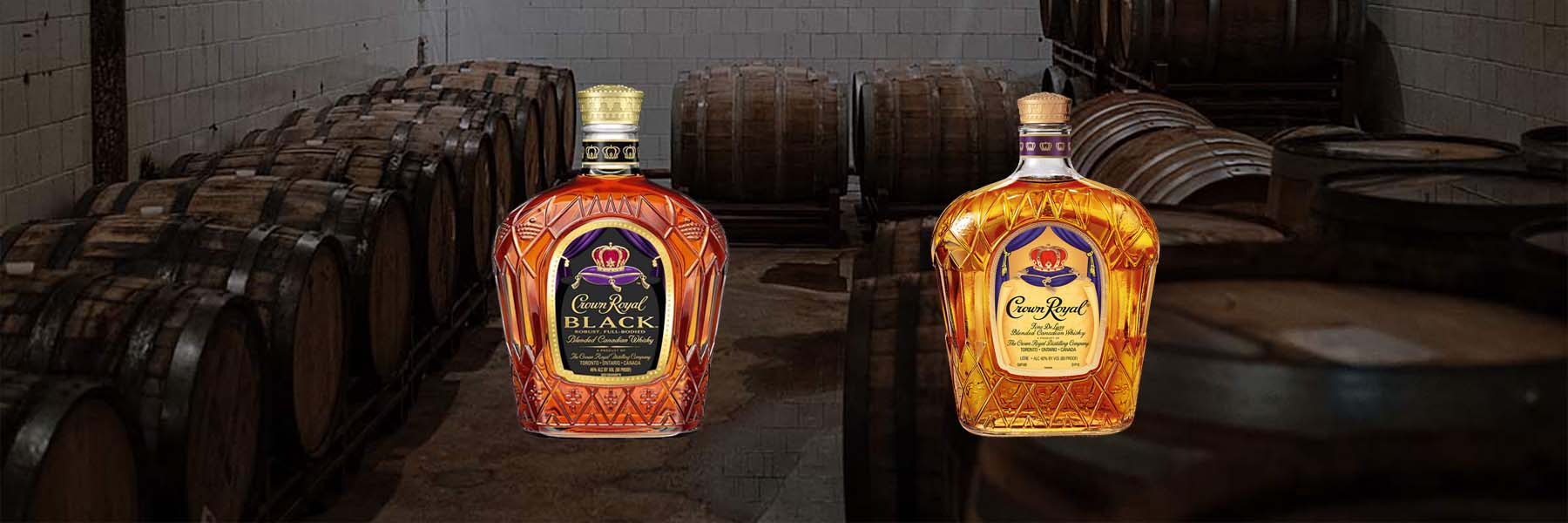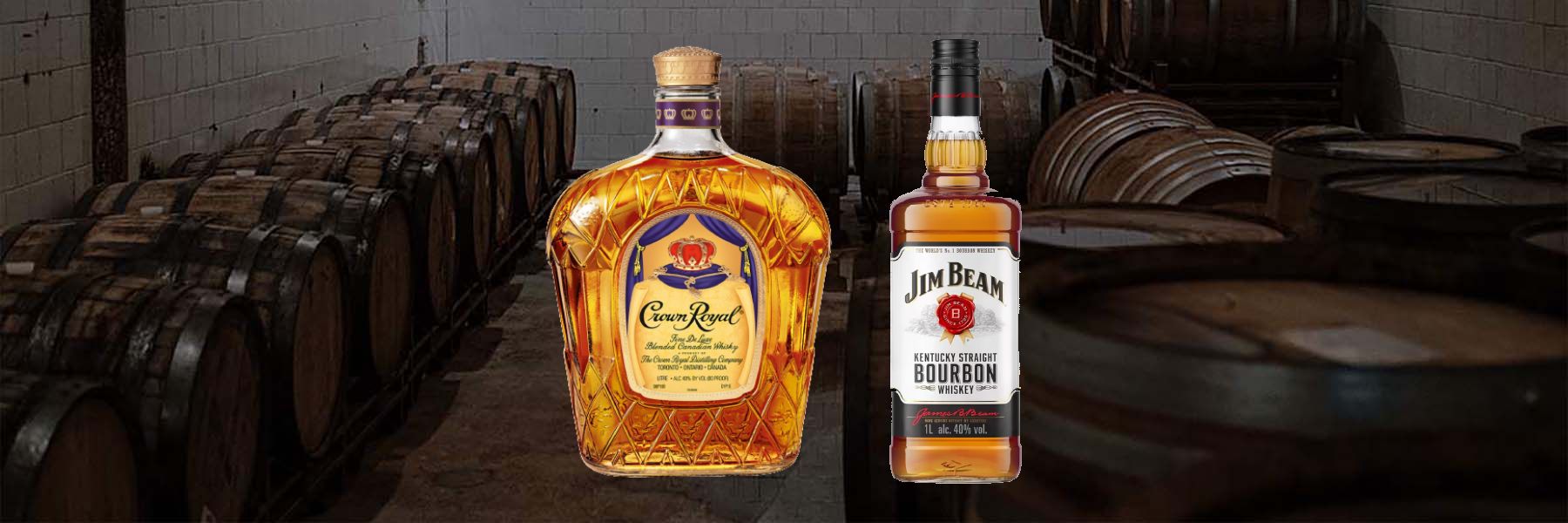Canadian Club vs Seagram’s VO Whisky | A Comprehensive Review
Last updated on August 13th, 2024
I know I’m not the first to shed light on Canadian Club vs Seagram’s VO, but I guarantee that my review will be the most in-depth you’ve probably ever read.
Starting with Canadian Club. I’ll say this: if you like whisky sweet, this one is probably for you. It has hints of apple, liquorice, fennel, and caramel, and you’re likely to experience some brown sugar and baking spice in there. In fact, I tasted liquorice first, but the other flavours marry well and mixed with it.
Overall, I feel that it’s better suited to a non-drinker who likes to venture into whisky every so often. That said, when you get into it and start drinking it, you’ll appreciate it more. In fact, you may never go back to other brands!
I have to say that the Canadian Club it smells quite nice, and it doesn’t even seem like whisky initially. Much of that comes from the pairings of caramel and apple, though the liquorice is also sweet-smelling.
There’s no age statement for Canadian Club, and it’s actually a blend of three different whiskies. You might be surprised to learn that it was originally crafted in Detroit, though they moved to Ontario, Canada, after Prohibition.
Beam Suntory owns Canadian Club, which is the parent company for Maker’s Mark, Jim Beam, and Knob Creek, among others. If you’ve ever had Forty Creek, you should expect a similar experience with this brand of whisky.
Seagram’s VO is very different than Canadian Club. Though it does have fruity notes, they’re often considered tart, such as lemon and apricot. Likewise, you’ll get a whiff of nail polish when you open the bottle, and that’s definitely something you have to get used to.
Still, the vanilla and cinnamon mix with the sour apple, lemon, and apricot to bring a slightly sweet taste at the end. Overall, you should expect it to be a bit bitter.
I’d have to say that the taste is thin; you’ll likely get the alcohol, but there will be some artificial whisky notes.
Though the ageing length isn’t disclosed, it’s at least six years. Likewise, Seagram’s VO is made in Montreal, Quebec, at the Sazerac’s Old Montreal Distillery. The VO part stands for “very own,” and that fits because it was created to celebrate Thomas, Joseph Seagram’s son, on his wedding day.
Canadian Club vs Seagram’s VO Whisky: Quick Look Comparison
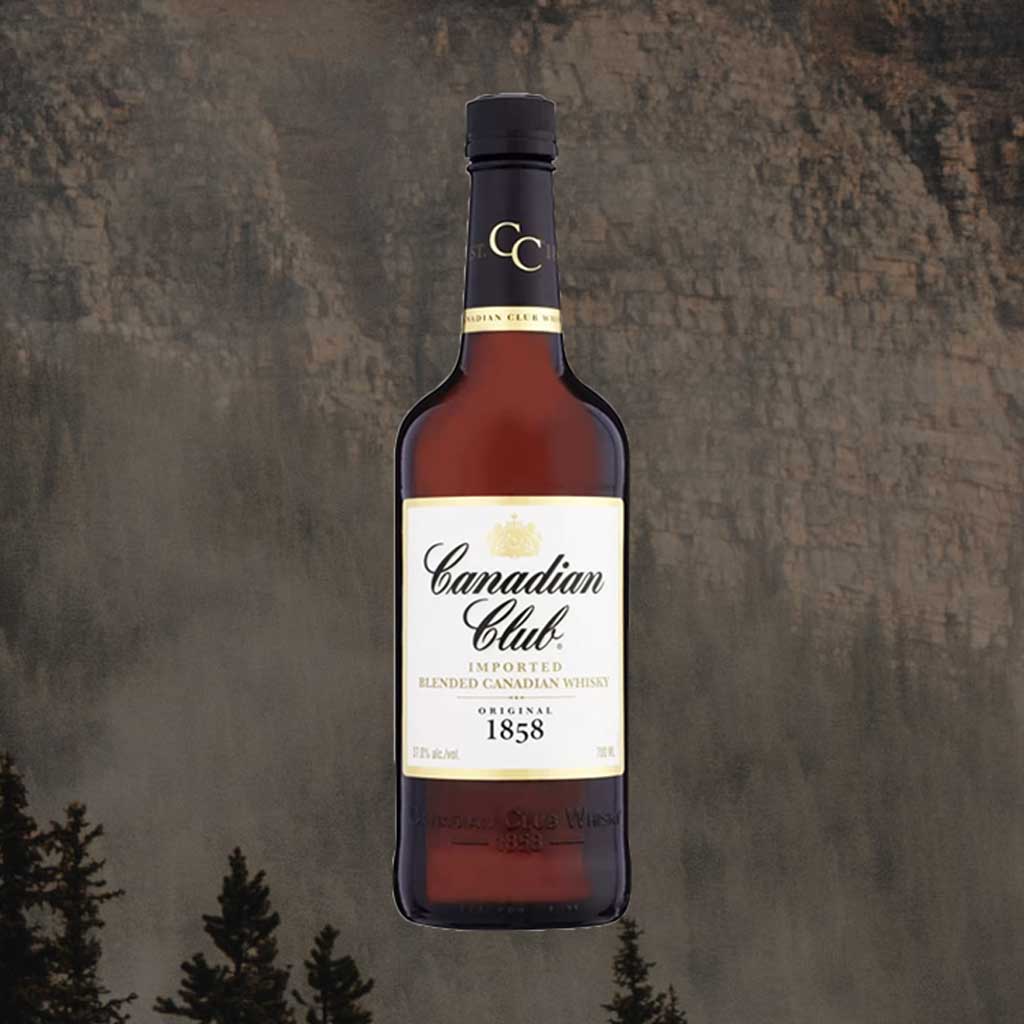
| Nose | Fennel, liquorice, apple, caramel. |
| Palate | Baking spice, caramel, brown sugar. |
| Mouthfeel | Thin, sweet, fresh, gentle. |
| Finish | Caramel, rye spice, short. |
| Age | 4 years (minimum). |
| Cask/Barrels | Canadian whisky or first-fill bourbon barrels |
| Strength | 80 proof / 40% ABV |
| Price | $25/£20 |
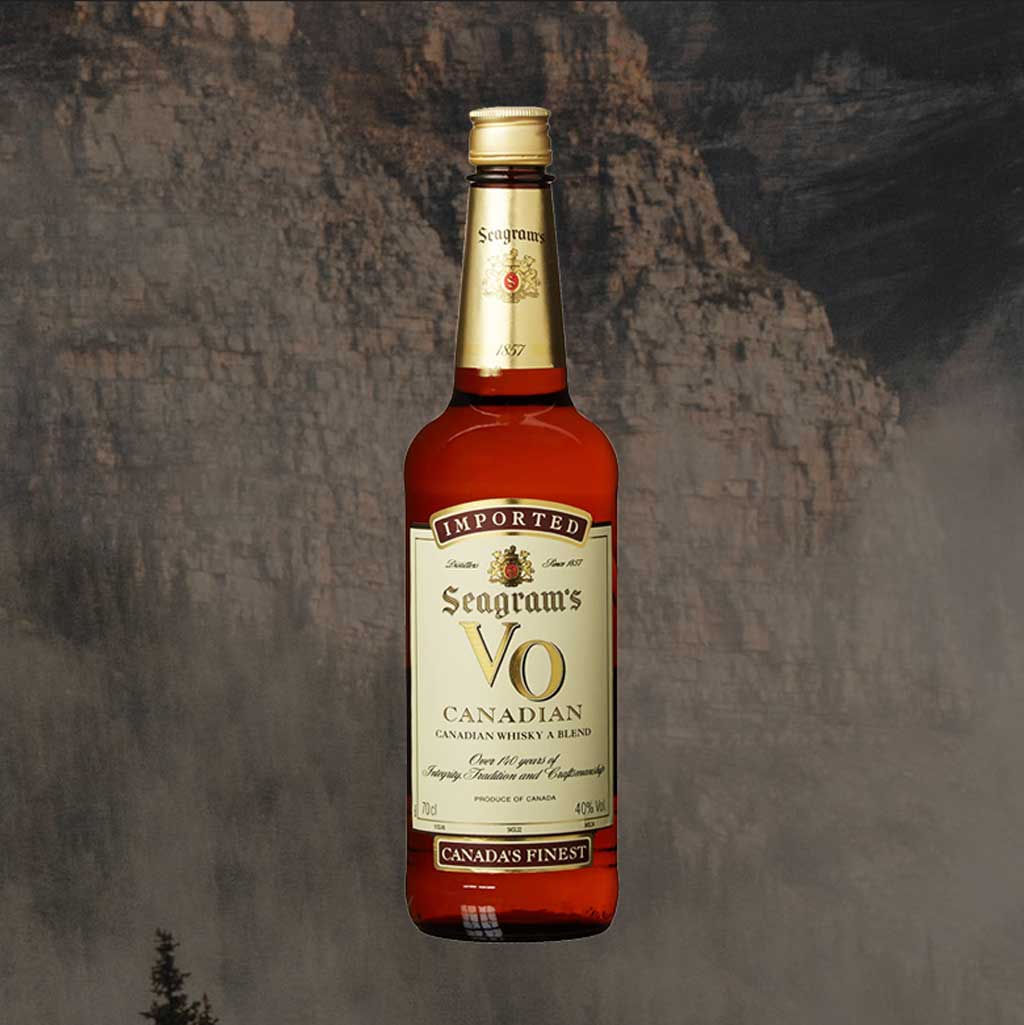
| Nose | Rye, lemon, nail polish, apricot. |
| Palate | Cinnamon, sour apple, vanilla, rye spice. |
| Mouthfeel | Hot, thin, acidic & fruity. |
| Finish | Bitter, medium in length. |
| Age | 6 years (minimum). |
| Cask/Barrels | White oak barrels, new & charred. |
| Strength | 80 proof / 40% ABV |
| Price | $26/£21 |
Seagram’s VO Whisky
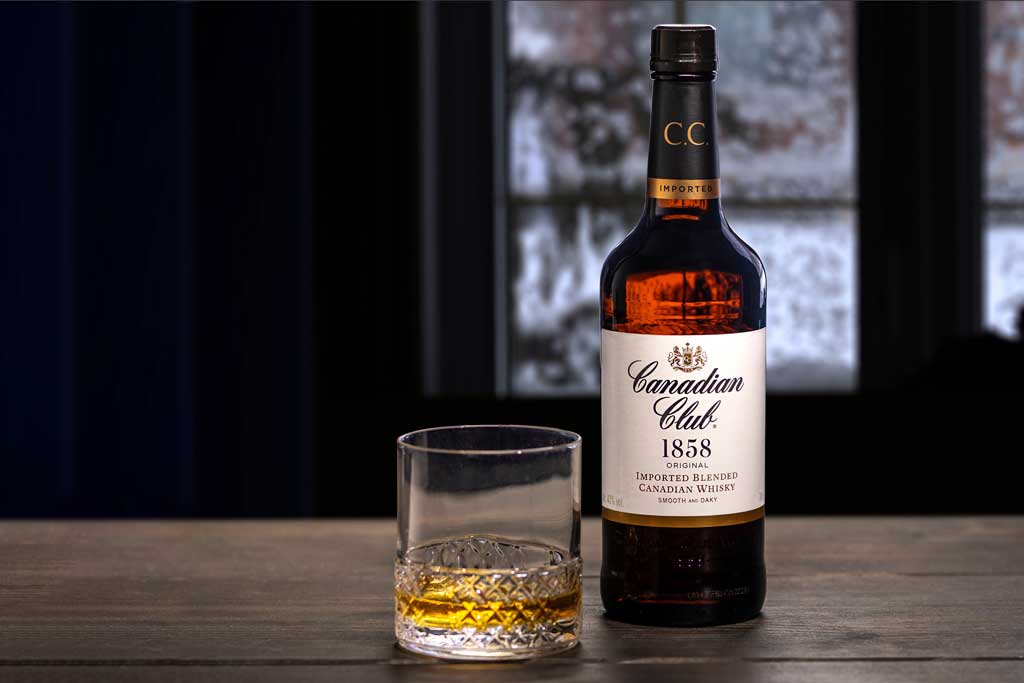
Canadian Club Review
You’ll notice the deep colour when you first pour Canadian Club whisky into your glass. Liquorice is your first nose note as you take a whiff, but you’ll also experience the blend of fennel, apple, and caramel.
Though it tastes sweet, it feels very thin and lacks body. Still, the initial taste is sweet caramel, which is followed by spiciness from the baking and rye spices used. Likewise, the sweetness continues because of the brown sugar notes.
The finish is smooth but short-lived. You’ll experience the caramel flavour and light rye spice up until the end, but it might have a subtle sour note afterward.
Overall, Canadian Club is a non-demanding whisky and is quite easy-going. It’s very sweet because of the caramel and rye spice, but there’s a milder sour note at the finish, though it’s not too bad.
In a sense, this is probably the whisky for non-whisky drinkers. I say that because it’s sweeter than most, and it can ease people into whisky if they’ve never tried it before or have had bad experiences in the past.
Likewise, Canadian Club is an affordable whisky on the market, and it’s one of the favourites among drinkers. It gives you the best value for your money.
Most people enjoy it on the rocks because the water from the ice will tone it down a bit. However, you can also drink it neat. Others prefer to use it as a base for a pleasant and smooth cocktail. I recommend trying it all three ways, first neat and then on the rocks, to appreciate it more and determine how best to mix it with other ingredients.
Canadian Club Whisky became famous after it was featured as the drink of choice for Don Draper in Mad Men, a television series. Jon Hamm played the character well, and it’s said that he drinks it to this day.
While Canadian Club doesn’t offer the same sophistication as other whiskies out there, it will deliver a good experience and comes at an affordable price.
Canadian Club facts
· There’s no age statement.
· Canadian Club was originally made in Detroit, Michigan, USA. After Prohibition, they moved to Ontario, Canada.
· It’s a blend of three whiskies. One is made from corn, the second is made from rye, and the third is a mixture of malted barley, malted rye, and rye.
· As of 2011, Beam Suntory owns Canadian Club. This is the parent company of Knob Creek, Jim Beam, Maker’s Mark, and many others.
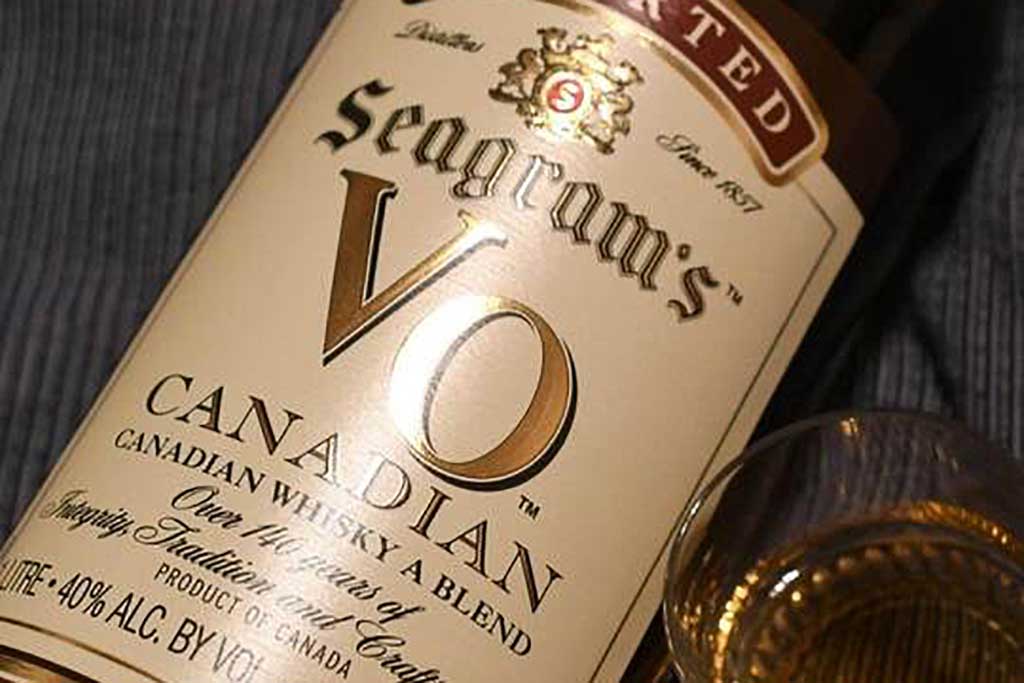
Seagram’s VO Review
You’ll note the deep colour as you pour Seagram’s VO into your glass. While this is normal for whisky, you may wonder if it’s alcohol or water because the nose is barely noticeable and, I’d say, it’s weak.
On the nose you’ll smell and unpleasant waft of acetone. Reminiscent of moonshine or poitín, this ‘rawness’ isn’t something most people aren’t prepared for and it will take some getting used to.
After that initial scent of acetone or nail polish, you’ll experience hints of rye spice, lemon, and apricot. It’s all very acidic on the nose. Still, on the palate, the texture lacks body and feels watered-down.
On the first sip, the initial feeling makes you question “Is it water or alcohol?” Overall, the taste is very thin. You won’t get much flavour here. There’s certainly a feeling of drinking alcohol, and it will burn. Likewise, the artificial whisky notes are there if you focus on them.
Rye spice is its predominant flavour here, but you’ll also experience sour apple, a bit of cinnamon, and fake vanilla. We all know that natural vanilla extract has a sweet, smooth flavour, but this one felt acidic and artificial.
The finish will last for a medium time frame, but you’ll likely have a bitter aftertaste. It will linger for a bit, and it builds as you continue drinking it.
Though this review sounds pretty negative so far, Seagram’s VO isn’t bad. It’s pretty unremarkable, but it’s easy to drink. I will say it has a hint of sweetness, but that bitter finish will detract from the appeal. If you prefer sweet beverages, this might not be the bottle for you.
In most cases, people don’t enjoy the VO neat or even on the rocks. As a sipper, it leaves something to be desired. Still, the price is right because it’s not expensive nor cheap, so it might be a great low-cost choice for cocktails.
Seagram’s VO facts
· The “VO” stands for “Very Own.”
· The whisky was launched to celebrate Thomas Seagram’s wedding. Joseph Seagram created it specifically for his son.
· Though the aging length isn’t disclosed, I’ve seen that it’s at least six years. I can say, without a doubt, that it’s between three and six.
· It’s made at the Sazerac’s Distillery, which is in Montreal, Quebec. If you’re interested in buying Canadian-crafted whiskies, this is one of the top choices.

Comparing Canadian Club vs Seagram’s VO Whisky
So far, I’ve talked about Seagram’s VO and Canadian Club as individuals. Now, it’s time to tie it all together to help you make a decision about what’s right for you.
First, I want to go over the various elements we’ve talked about so far, putting these two whiskies head-to-head in a showdown.
Cost: Both whiskies are similar in price, with Canadian Club being $25/£20 and Seagram’s VO costing $26/£21. If you’re comparing apples to apples here, the former is marginally the most cost-effective option of the two.
However, you also have to think about taste. It’s nice to spend as little as possible, but you want it to be good. Most whiskies have sweet notes to them, which is part of the enjoyable uniqueness of them. Therefore, lemon, apricot, and the slight sweetness from Seagram’s VO might be more your style. Those who prefer sweet drinks will likely want to choose Canadian Club.
Strength: If we focus on alcohol content, we’ll see that they are both the same. Therefore, you’re getting the same amount of alcohol per volume, regardless of the one you choose.
Nose: Canadian Club is more on the sweet side, while Seagram’s VO is more bitter-tasting and will likely give you nail polish vibes.
Overall, Seagram’s VO smells like acetone, and there’s no way around that. If you have a sensitive nose, expect to be shaken right out of the box. Honestly, the other aromas are barely there, but the chemical note is often off-putting to many.
Since Canadian Club smells like liquorice as you open the bottle or pour, it’s more appealing to people. Therefore, I must say it wins in this department.
Mouthfeel: Honestly, there’s not much of a difference between the two because both are pretty thin and weak here. If you like a sweeter and spicier flavour profile, you will likely go with Canadian Club. Those who prefer a touch of spice with less flavour will enjoy Seagram’s VO.
I should point out that these whiskies are designed to be enjoyed with water added or at least “on the rocks” (with ice.) When you add the water, it tones down the sweetness of the Canadian Club whisky and also reduces the acidic feelings of Seagram’s VO.
Because Seagram’s VO takes some time to acclimate to it, you will probably get off the ground faster with Canadian Club. However, if you can give it time and take Seagram’s VO seriously, you’ll likely be rewarded for your patience.
While the fullness and body are similar on both sides, the nuances listed here will help you choose what is best for you based on your tastes.
Finish: As far as aftertaste goes, there’s no contest here. Canadian Club has a short one, and you’ll experience caramel and spice undertones. However, Seagram’s VO has a longer finish, and it’s likely to give you a bitter aftertaste. Some people truly like that because they expect it from whisky, so that isn’t necessarily a bad thing.
If you prefer something to kick strongly from the beginning, Seagram’s VO is the right choice. Those who want to ease into it will like Canadian Club.
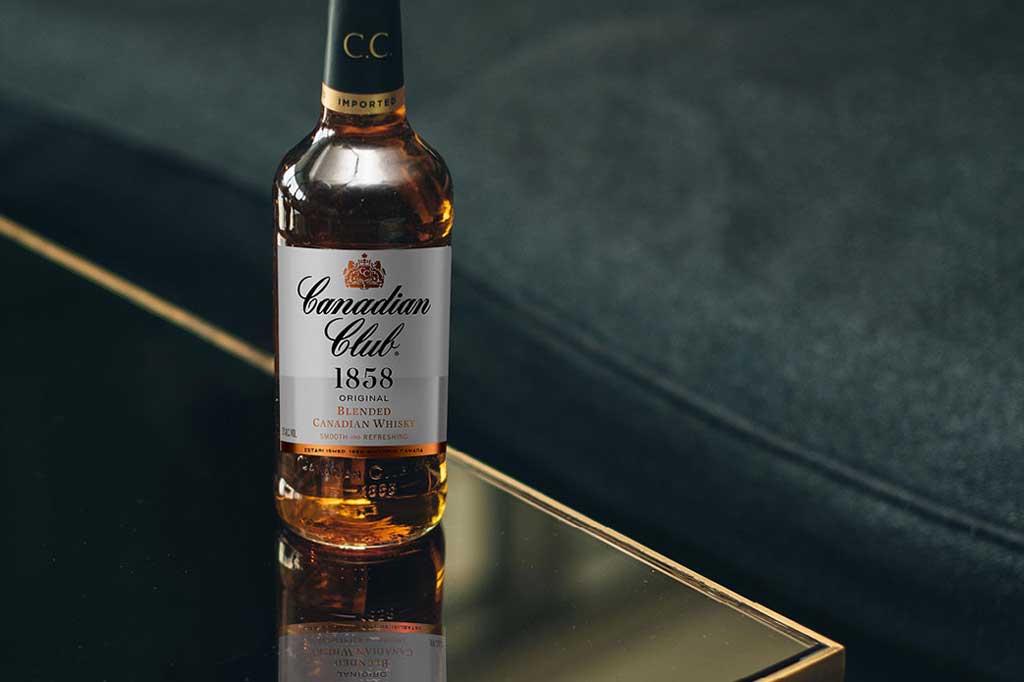
Canadian Club vs Seagram’s VO Whisky: Final Thoughts
Having gone over the various attributes of the two whiskies presented today, it’s time to summarise which one you might prefer over the other. However, I also know you probably want to hear my preferences and thoughts on the matter.
To do that effectively, I’ll start by scoring Seagram’s VO and Canadian Club on five criteria. At the end, the final score will give you my preference. However, I’ll go a bit further by explaining my reasoning to ensure that you understand why I chose what I did.
| Canadian Club | Seagram’s VO | |
| Colour | 10/10 | 10/10 |
| Aroma/Nose | 9/10 | 5/10 |
| Mouthfeel | 9/10 | 8/10 |
| Taste/Palate | 9/10 | 8/10 |
| Finish | 8/10 | 7/10 |
| Total Points | 45/50 | 38/50 |
Author’s Pick
As you can see, there’s no comparison here. I prefer sweeter whiskies that leave a pleasant taste in my mouth after they’ve gone down, so I might be a little biased. Still, I felt that, comparing those five criteria, it was the only score I could produce.
Overall, the numbers summarise my true experience with each whisky. I feel very firm about Canadian Club being the winner.
However, I will say that, in some areas, the two compared to each other nicely.
Both had good colour. They were each dark gold, and the visual has always appealed to me. (Although, artificial colourings are present, they both had a great look to them.)
On the nose Seagram’s VO dipped way down on the list. I just felt that the acetone/nail polish smell was a bit off-putting, and many people are likely to agree. If you don’t, you’re more than welcome to that opinion. However, I don’t want my whisky to remind me of nail salons. It’s just not attractive, and I can’t get over that fact.
Of course, there were a few other aroma elements that were appealing about Seagram’s VO, but the acetone smell was just too much.
On the palate I also felt they were quite similar, but I did give Canadian Club an extra point because of the caramelised sugar and baking spice. Overall, I believe it was just a warmer, tastier option. Though you don’t necessarily get the acetone flavour from Seagram’s VO, the citrus really took me off guard. Paired with the nail polish smell, it was overpowering.
In terms of mouthfeel, the Seagram’s VO is smoother with the flavours hitting you quickly building from there. If that’s something you enjoy, then it might be the best choice for you. It should also be pointed out that I liked the tingle it put on my tongue. Overall, the flavours complemented each other, but it wasn’t quite as exciting as Canadian Club.
I didn’t feel too strongly about the mouthfeel for either whisky. However, I prefer sweeter drinks, and Canadian Club had a gentle, fresh, and sweet feel to it. Therefore, it had a slight edge for that reason alone.
In the finish I also gave an extra point to Canadian Club. I prefer a short finish and want the aftertaste to be smooth and sweet. That’s exactly what I got, so it was no comparison.
However, Seagram’s VO has that “whisky” feeling, which is what many people want and expect when they imbibe. The bitter finish was a bit too much for me, and it took a while for it to come up and build.
With all of this in mind, I’m confident that Canadian Club is the winner here. There’s no comparison! If you like your whisky sweet, this is the choice for you. However, those who prefer a slightly bitter taste will absolutely fall in love with Seagram’s VO.



